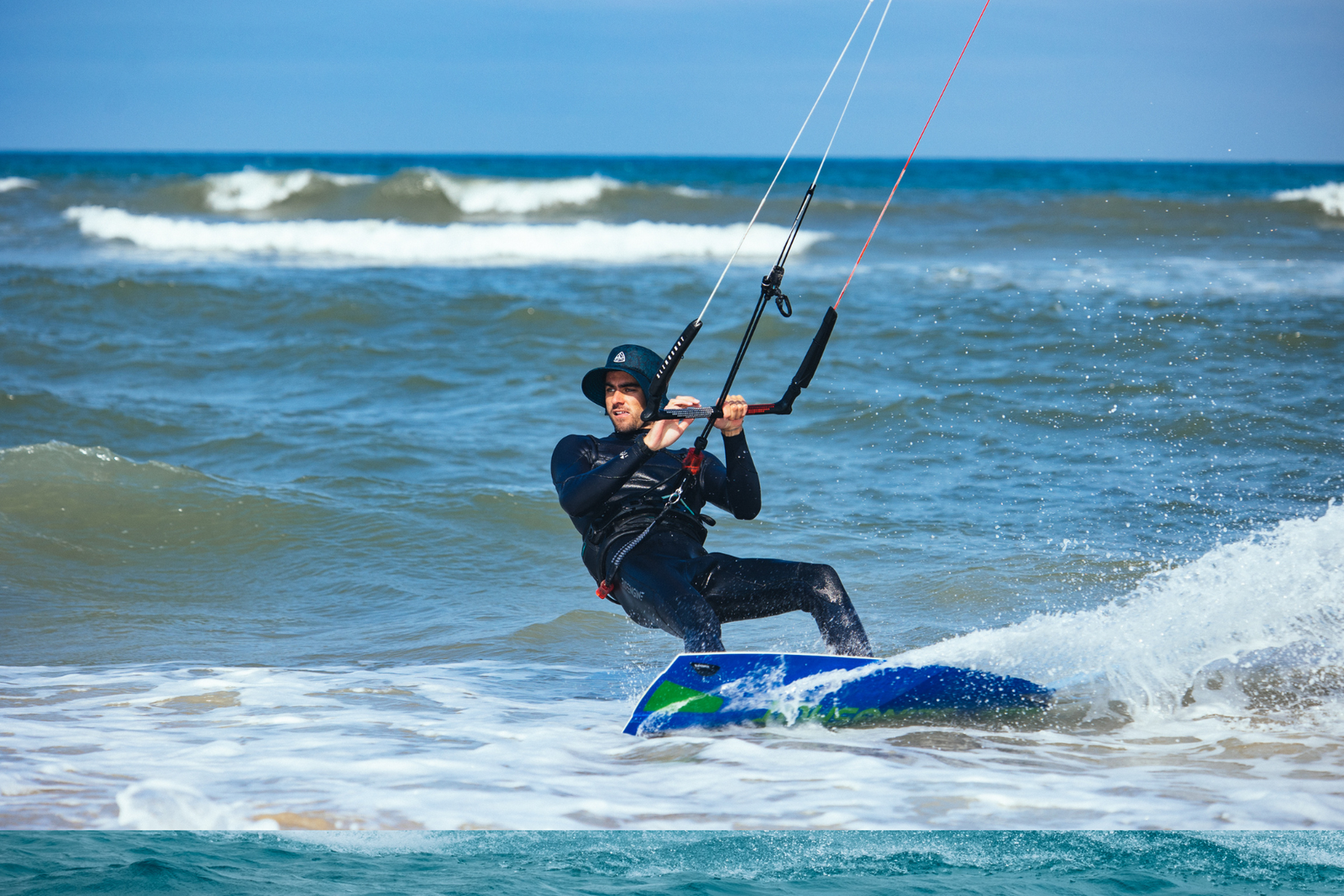In order to learn how to kiteboard, it’s helpful to understand the basics of the sport before you start. Let’s take a look at some basics that will help you understand the core principles of kiteboarding and give you an idea of what you can expect when you start learning how to kiteboard!
What is Kiteboarding?
An incredible wind & water sport that combines elements of other popular sports such as wakeboarding, surfing & windsurfing. It relies on a large power kite to pull the rider across the water. The rider controls the kite via a handheld bar and is connected by a series of lines to a harness at their waist. With such an exciting variety of disciplines, freeride, freestyle, kitesurfing and kite foiling, kiting can be a life changing passion and journey for all ages, whether you are 10 or 70!

The things you need to get started
A nice big twin-tip (kite board) with footstraps, a harness (seat or harness), a control bar & lines, a quality beginner friendly kite and a pump. We also recommend considering a personal floatation (life jacket) device and a helmet. With this gear, you are ready for your first kiteboarding lesson.
Where and when can you learn?
Most large coastal towns will now have a kitesurfing instructor or school that can help get you started! We absolutely recommend getting a lesson with an Kiteboarding Australia accredited school, this will ensure you learn as quickly as possible, have the most fun and stay safe whilst doing it. Head to Kiteboarding Australia for a list of accredited schools here.
Typically for most of Australia, summer is the best time to learn as the warmer temperatures create more consistent sea breezes that are perfect for kiting. However the opposite is true for the northern parts of the country as the trade winds blow all through winter and into spring. It is worth keeping in mind that you may need to be patient whilst you wait for wind when learning, whilst it may be frustrating initially, this reliance on mother nature truly is the beauty of kiteboarding and ultimately leads to a greater connection to the weather and the outdoors!
What do I wear kiteboarding?
A wetsuit is a good option for those in colder climates. Again, an impact vest or life jacket as well as a helmet are a great idea to keep you safe.

Tips for first-time kiteboarders
When learning to kite, don’t give up! Whilst initially, learning to control the kite and the board might seem overwhelming, it will very quickly become second nature and you will be cruising back and forth with the wind before you know it. Kiting can be much easier to learn and become proficient at than surfing as when you are kiting you are practicing and improving the whole time, without the competition for a scarce resource like waves.
Most schools and instructors will break a lesson(s) down into three 2 hour blocks;
- Set up, safety tips, and kite flying.
- Kite flying and body dragging in the water.
- Getting on the board!
Once you have done your lessons, you can look at purchasing your own gear and find your local kiting community, so you can continue to learn from them and share the stoke! Often your local kite shop is a great place to connect with the community.
Otherwise, pay attention to what the weather and wind are doing and only venture out in suitable conditions. If you are just learning, stay near land where you can easily self rescue. Of course make sure your equipment is well maintained.
Our top picks for beginner kiteboarding equipment
- Code v1 Kite Our most versatile kite, suited to every condition or discipline
- Sentry V1 Control Bar & Lines We have combined comfort, performance, and dependability
- Kim K Pump Makes inflating your kite a breeze
- Fly Strap Foot Straps Free of gimmicks and gadgets
- Missfit V11 Twin Tip Kiteboard From beginner to big air, this board is the one stop shop
- RideEngine Momentum Soft Shell Harness Maximum freedom with a locked in fit
Stay safe and have fun!
